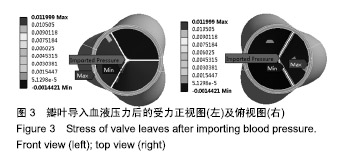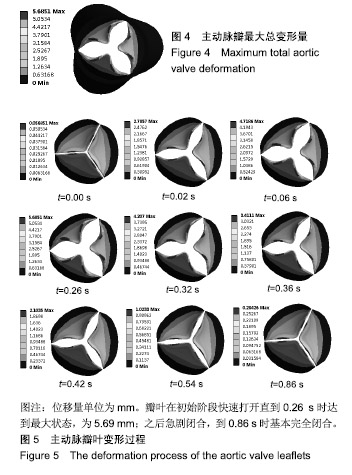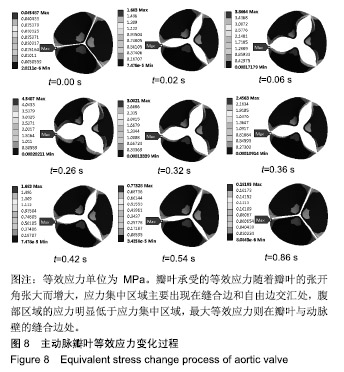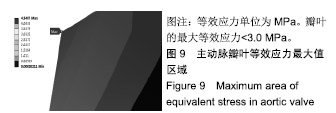中国组织工程研究 ›› 2019, Vol. 23 ›› Issue (30): 4799-4803.doi: 10.3969/j.issn.2095-4344.1418
• 组织工程血管材料 tissue-engineered vascular materials • 上一篇 下一篇
分层血管对心脏瓣膜流固耦合的影响
刘杏铭,袁 泉,丛 华,朱宏伟
- 山东大学机械工程国家级实验教学示范中心,高效洁净机械制造教育部重点实验室,山东省济南市 250061
Effect of stratified vessels on fluid-solid interaction of heart valves
Liu Xingming, Yuan Quan, Cong Hua, Zhu Hongwei
- National Demonstration Center for Experimental Mechanical Engineering Education of Shandong University, Key Laboratory of High-efficiency and Clean Mechanical Manufacture of Ministry of Education, Jinan 250061, Shandong Province, China
摘要:
文章快速阅读:
.jpg)
文题释义:
分层血管:血管壁具有分层结构,一般分为内膜、中膜、外膜3层,其中每层都含不同量的弹性蛋白、胶原、血管平滑肌细胞以及细胞外基质,各层的力学特性也不尽相同。
心脏瓣膜流固耦合:基于临床核磁共振成像(MRI)数据建立三维主动脉瓣有限元分析模型,研究主动脉瓣与血液的流固耦合理论,运用有限元分析软件研究主动脉瓣变形特点和应力分布情况。了解主动脉瓣变形特点和应力分布情况对再生医学、医疗器械设计和生物膜置换结构的组织工程具有直接的临床意义。
背景:心脏瓣膜病的治疗手段主要为心脏瓣膜置换,人工心脏瓣膜的设计和性能优化是目前研究者和业界研究与探索的主要方向。数值分析和实验的方式是分析人工心脏瓣膜力学性能的主要方法。利用有限元技术分析瓣膜力学性能,揭示瓣膜在体内运行环境下的微观受力情况,可为人工心脏瓣膜的设计和性能优化提供更加准确的数据。
目的:建立更接近人体实际情况的血管模型,探究分层血管对主动脉瓣变形特点和应力分布的影响,为进一步改进人工心瓣的设计提供力学支持。
方法:建立包括主动脉瓣、血管壁和血液的有限元几何模型和数学模型,其中血管壁为分层血管,探讨血管分层特性对主动脉瓣流固耦合变形及应力大小的影响,验证分层血管壁对实验的重要性。
结果与结论:①瓣膜变形主要发生在瓣叶处,动脉壁没有明显的变形,瓣叶自由边汇合处变形最大,从瓣叶自由边到缝合边变形量呈梯度降低;②整个心脏瓣膜模型的等效应力最大值位于动脉壁外壁(瓣叶与动脉壁缝合点附近),动脉壁内外壁受力差异大,内壁相较于外壁等效应力值小很多,壁面之间存在应力不连续性;③瓣叶最大等效应力在瓣叶与动脉壁的缝合边处。与以往未考虑血管分层特性的研究结果相比,瓣叶最大等效应力值更接近人体二尖瓣叶的离体失效应力。
中图分类号:





.jpg)
.jpg)
.jpg)
.jpg)
.jpg)